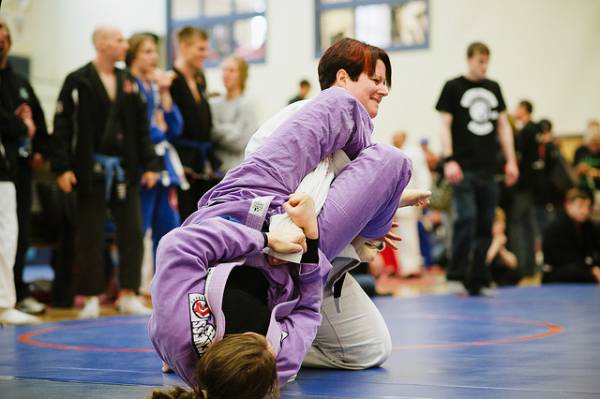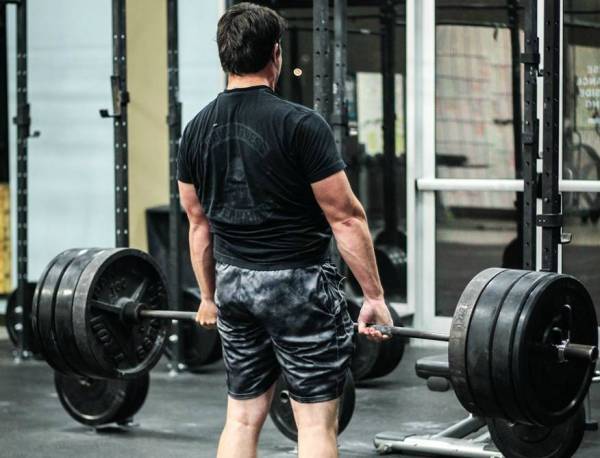Brazilian Jiu Jitsu has been referred to as human chess for a good reason. What makes BJJ difficult to grasp is the unlimited number of possibilities that occur in order to win a match.
Your mind has to be ready for anything your opponent throws at you. In addition, your body must respond to the input from your brain telling you to move in a specific way based on what you or your opponent is trying to do. The variations in movements that the body must perform during a match are perhaps the ultimate form of conjugate training.
The conjugate method, popularized by Louie Simmons of Westside Barbell, is a system of training that emphasizes variation in order to avoid the law of accommodation (more on that in a moment). Conjugate training varies exercise, weight, speed, and volume of exercises, thus avoiding adaptations of the body. In a sport such as BJJ, the body is forced to be strong in positions where most people are weak.
The Law of Accommodation
The law of accommodation is the main reason the conjugate method is remarkably effective. This law states that the response of a biological object to a given constant stimulus decreases over time.1 Simply, if you perform the same type of exercise every day, your body does not produce the same response as it did when you first started. If you perform the same workout over and over again, your progress will eventually stall and even regress.
Applying the Conjugate Method to Your Training
Applying the conjugate method to your training does not have to be complicated. However, it is important to understand a two key terms:
- Volume is the number of sets and repetitions performed in a workout. Another way to think about it is the amount of work being done.
- Intensity is the rate at which work is done or the energy required.
“In a sport such as BJJ, the body is forced to be strong in positions where most people are weak.“
For a BJJ practitioner, there are two areas where you will apply the conjugate method. First is during your Brazilian Jiu Jitsu training sessions, and second is through your strength training sessions.
The Conjugate Method in BJJ Sessions
The first way to apply the conjugate method to BJJ training is to vary the body type of the person you are training with. Some days, choose a partner who is larger than you, while on other days, choose someone smaller.

Size can often determine the way a technique is executed. A larger training partner is going to create different angles and have different leverages than a smaller partner. Shooting a triangle on someone who is tall will require you to shoot your hips higher, while shooting a triangle on a smaller person may not require the same hip height.
In addition to varying your partners, also vary your training intensities. Rarely will you have to tell a BJJ practitioner to train hard. They are frequently training at high intensities. But adding some slower movements to your training is going to benefit your performance and health.
In any given week, you should include high-, medium-, and low-intensity training sessions. A week could look like the following:
- Day 1 – High-intensity training with sparring and/or drilling
- Day 2 -Low-intensity training using movement drills or technique
- Day 3 – Medium-intensity training through positional drilling or longer sparring rounds where you are moving at a good pace the entire time
“By nature, our sport is the ultimate form of conjugate training.”
The last piece of the puzzle is to vary your training volume. Some days, you may want to train for ninety minutes. Other days, you are only going to be able to train for thirty minutes. Your training intensity will determine how hard you train on those days. For example, you could do thirty minutes of high intensity training or ninety minutes of medium intensity training. Add as much variety to your training program as possible.

Strength Training
The number of ways to add variation to a strength and conditioning program may seem unlimited, and therefore also overwhelming. To keep it simple, here are four suggestions for how you can improve your strength routine:
- Examine the volume of your training session. Using the squat as an example, if you squat 100 pounds for 10 repetitions, your volume for that set is 1,000lbs. If multiple sets are performed, then that number can double or triple. Over the course of a workout, that number can add up. For the best results, some training sessions should be high volume while others should be low.
- Vary your training intensity. Some days, lift heavy while other days, lift light. Variety can also be incorporated over multiple sessions across a week or within one workout. An example may look like this: heavy main exercise for low repetitions followed by lighter, high-repetition accessory exercises. Something to keep in mind when you are planning your workouts is that volume and intensity should have an inverse relationship. Meaning, when intensity is high, volume should be low.
- Change your exercises, not your movements. Every training program should include some type of squat, hinge, push, and pull. If your program is lacking any of those movements, start including them. If those movements are already included, start adding variety. Using the deadlift as an example, you could perform sumo deadlifts during week one, conventional deadlifts during week two, and trap bar deadlifts during week three.
- Add a different form of accommodating resistance. You can add variety to your training program by including chains or bands on the bar. Chains and bands will alter the strength curve of an exercise. Both could make the execution heavier at the lock out position or bands can be used to lower the weight of an exercise, such as with an assisted pull up.
Conclusion
In BJJ, no two training sessions are ever identical. By nature, our sport is the ultimate form of conjugate training. In any given session, you will confront training partners of different sizes, speeds, and strengths. Therefore, it is essential to train with those parameters in mind. Changing the volume and intensity of all your training will help you keep up with any partner you encounter on the mat.
Check out these related articles:
- The 7 Laws of Training According to Dr. Fred Hatfield
- Conjugate Method: A Better Way to Plan Your Training Week
- 4 Steps to Increasing Strength to Weight Ratio In BJJ
- What’s New On Pulse Beat Fit Today
References:
1. Vladimir M. Zatsiorsky and William J. Kraemer, The Science and Practice of Strength Training. (Champaign, IL: Human Kinetics, 2006).
Photo 1 courtesy of Shutterstock.
Photo 2 courtesy of David Brown.
Photo 3 courtesy of Shannon Khoury.






